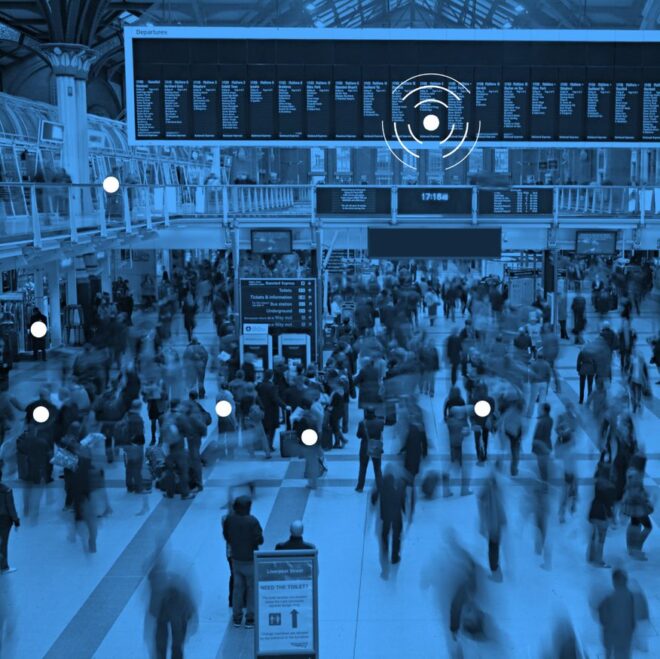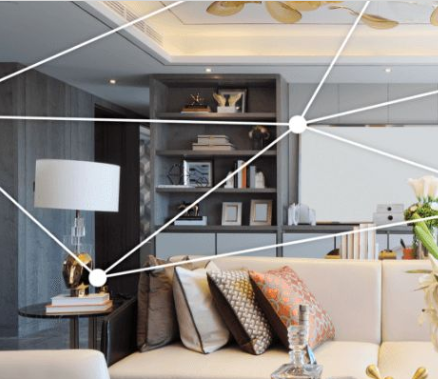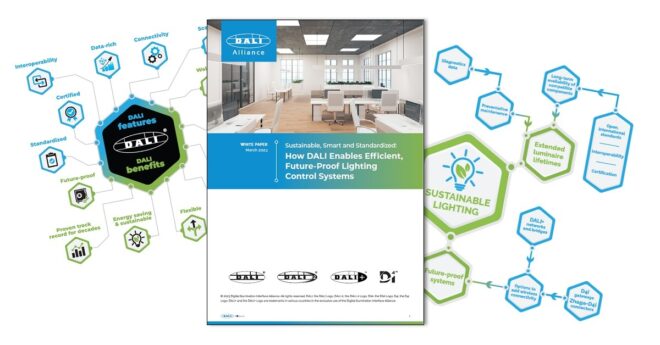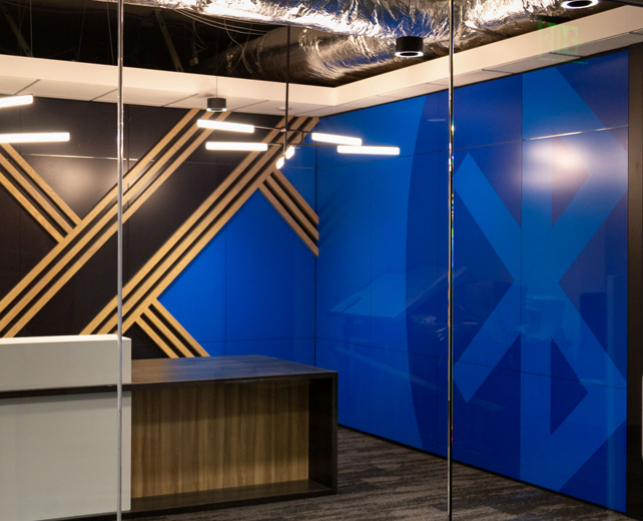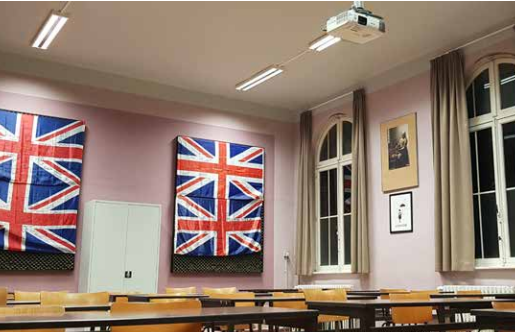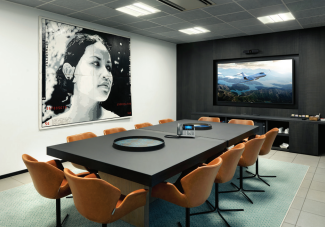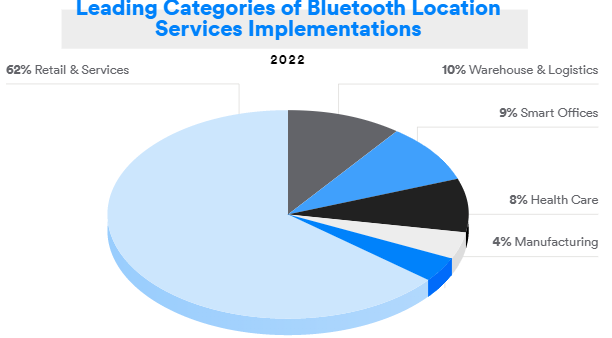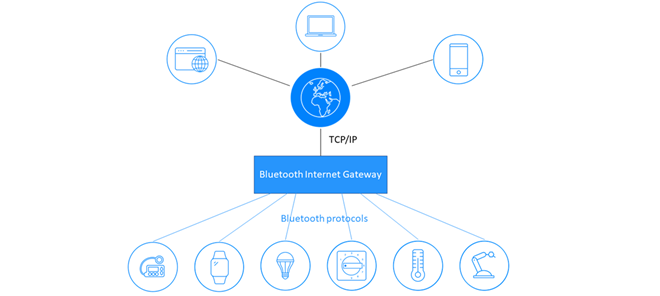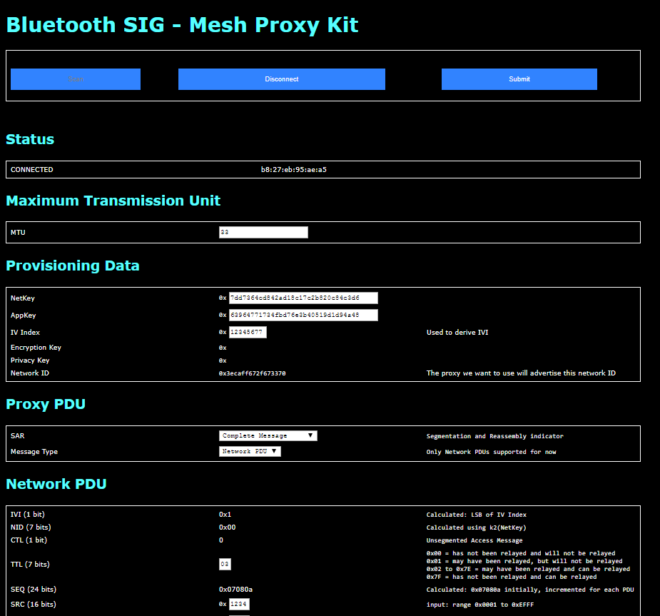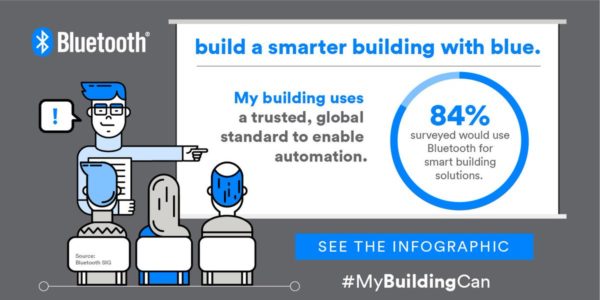
With a growing number of smart building solutions being deployed across facilities worldwide, it’s important to understand which implementation strategies best suit your operational needs. Doing so will ensure your facility benefits from greater cost savings, enhanced interoperability, and increased optimization of daily processes.
Recently, at IoT Tech Expo in Santa Clara, we had an opportunity to hear from industry experts Szymon Slupik, CEO of Silvair and Trent Fierro, director of software solutions marketing for Aruba, Hewlett Packard Enterprise Company on ideal solutions for supporting smart building services. When the topic of Bluetooth®technology and Wi-Fi was raised, a powerful theme emerged. These two enabling solutions are often perceived to be competing for the same place in the smart building. However, according to the panelists, Bluetooth and Wi-Fi are not necessarily pitted against one another. More accurately, they can be complimentary technologies with each playing a significant part in what will ultimately be a multi-protocol approach to smart building services.
Lighting as a Platform
Bluetooth® technology has carved its role in the smart building by enabling indoor positioning and location services that focus on point-of-interest information, indoor navigation, asset and item tracking, and space utilization. In addition, the 2017 launch of Bluetooth Mesh networking marked the formal entry of Bluetooth into full-building automation.
“The value of additional services enabled by smart lighting is seven to ten times more valuable than the lighting controls and energy savings themselves.”
The conversation zeroed in on the use of Bluetooth Mesh to enable lighting as a platform, making possible the creation of building control, monitoring, and automation systems. As Slupik described, the first application for lighting as a platform is to control lighting itself. Using a mesh network to interconnect peer nodes together, these nodes can subscribe and react to digital information that flows across the network, such as occupancy and ambient light levels. The second application is product maintenance. With a connected mesh network lighting infrastructure, you can detect failures before they happen.
“With a Bluetooth Mesh network, you can bring proactive maintenance concepts to simple objects like light sources,” said Szymon Slupik, CEO of Silvair. “Then, those lights – due to the multi-service nature of Bluetooth radios – can support other services. The value of those additional services enabled by smart lighting is seven to ten times more valuable than the lighting controls and energy savings themselves.”
As Slupik explained, this versatility of the Bluetooth radio is what makes possible a third set of applications. “The beauty of Bluetooth is that the same bluetooth chip can receive beacons, be a beacon, and control a light— all at the same time,” said Slupik. A Bluetooth wireless lighting solution can also function as a platform to further enable indoor positioning and location services applications, increasing the return on smart building investment.
A Multi-Protocol Approach to Smart Building Services
As Fierro explained, Wi-Fi surely plays its role in the smart building too. Among other potential applications, Wi-Fi can be used to manage the lighting platform and send the data that flows through the mesh network back over the Internet. In this way, whether a building’s beacons and sensors are integrated within a mesh network or stand alone, Wi-Fi can serve as a complimentary technology to Bluetooth.
“An ideal smart building solution will almost assuredly leverage multiple technologies working in tandem.”
“If you’re going to deploy a wayfinding solution that includes standalone beacons and an application that shows you a blue dot as you’re walking, the whole idea then is to get the information from your phone back into the cloud,” said Fierro. “Typically, you’re going to use Wi-Fi. They (Bluetooth and Wi-Fi) work together.”
The decision to use Bluetooth technology and Wi-Fi is not an either or proposition. An ideal smart building solution will almost assuredly leverage multiple technologies working in tandem. Watch the full video, The Expanding Role of Bluetooth in Smart Buildings, to discover how smart building solutions built on a lighting platform can complement and support an established Wi-Fi network to help create a true smart building experience.
To learn more about how Bluetooth® technology is impacting the smart building market, download the 2018 Bluetooth Market Update and get access to Bluetooth smart building trends and forecasts.
![]()
FEATURED DOWNLOAD
Now Available: 2020 Bluetooth Market Update
The trends in the Bluetooth® Market Update highlight the direction of the Bluetooth member community and technology – including recent advancements in mesh networking and the introduction of Bluetooth LE Audio.





![shutterstock 1653733096[1]](https://www.bluetooth.com/wp-content/uploads/2024/03/shutterstock_16537330961-660x372.jpg)

